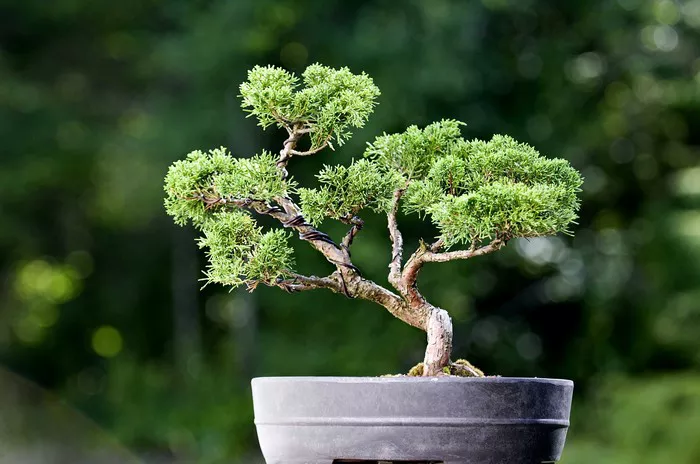Bonsai, the ancient Japanese art form of cultivating miniature trees, carries profound symbolism beyond its aesthetic appeal. Delving into the world of bonsai unveils layers of meaning that reflect principles of nature, spirituality, and human endeavor. From its humble origins in China to its refinement in Japan, bonsai has evolved into more than just a horticultural practice—it has become a symbol of harmony, balance, and the human connection to the natural world.
The Origins of Bonsai: A Tale of Patience and Adaptation
The roots of bonsai can be traced back to ancient China, where miniature landscapes, known as penjing, were cultivated as symbols of wealth and prestige. These early forms of miniature trees and landscapes were often displayed in wealthy households and imperial gardens, reflecting the grandeur of nature in a confined space.
As the art of penjing spread to Japan during the Kamakura period (12th to 14th centuries), it underwent significant transformation, giving rise to what we now know as bonsai. Influenced by Zen Buddhism and the Japanese aesthetic of wabi-sabi, bonsai artisans began to emphasize simplicity, balance, and the appreciation of imperfection.
Harmony with Nature: The Essence of Bonsai
At the heart of bonsai lies the concept of harmony with nature. By meticulously shaping and pruning trees to mimic the forms found in the natural world, bonsai artists seek to create a sense of balance and tranquility. Each tree is carefully selected and nurtured to reflect the beauty and diversity of the natural landscape, whether it be a windswept pine clinging to a rocky cliff or a graceful maple arching over a serene pond.
The process of cultivating bonsai requires patience, discipline, and an intimate understanding of horticulture. Through careful observation and cultivation, bonsai artists learn to work in harmony with the natural growth patterns of the tree, coaxing it to develop into a miniature representation of its full-sized counterpart.
Symbolism in Bonsai: A Reflection of Life
Beyond its aesthetic beauty, bonsai carries deep symbolic meaning that resonates with people around the world. Each element of a bonsai composition—from the choice of tree species to the arrangement of branches—can convey a specific message or evoke a particular emotion.
One of the central themes in bonsai symbolism is the concept of resilience and endurance. By withstanding the rigors of pruning, wiring, and shaping, bonsai trees symbolize the strength and perseverance required to overcome adversity. Just as a bonsai tree continues to thrive despite its small size and limited resources, so too can humans find resilience in the face of life’s challenges.
Additionally, bonsai serves as a reminder of the fleeting nature of existence. Like the transient beauty of a cherry blossom in bloom, the lifespan of a bonsai tree is finite, yet it leaves a lasting impression on those who behold its beauty. In this way, bonsai encourages us to cherish each moment and appreciate the beauty that surrounds us, even in the midst of life’s impermanence.
Cultural Significance of Bonsai: Tradition and Innovation
Throughout its long history, bonsai has become deeply ingrained in Japanese culture, serving as a symbol of tradition, craftsmanship, and cultural heritage. From the imperial gardens of Kyoto to the bustling streets of Tokyo, bonsai has captivated the imaginations of people from all walks of life, inspiring generations of artists, poets, and gardeners.
In recent years, bonsai has also gained popularity beyond its traditional Japanese roots, captivating enthusiasts around the world with its timeless beauty and philosophical depth. Bonsai societies and clubs can be found in countries across the globe, where enthusiasts gather to share their knowledge, expertise, and passion for this ancient art form.
As bonsai continues to evolve and adapt to the modern world, contemporary artists are exploring new techniques and styles that push the boundaries of tradition while still honoring its fundamental principles. Whether experimenting with unconventional tree species or incorporating innovative design elements, these artists are expanding the horizons of bonsai and ensuring its relevance in the 21st century.
Conclusion
In conclusion, bonsai is far more than just a form of horticulture—it is a timeless art form that embodies the beauty, harmony, and resilience of the natural world. Through its intricate symbolism and profound philosophical underpinnings, bonsai invites us to contemplate the interconnectedness of all living things and the impermanence of existence.
As we marvel at the exquisite beauty of a finely crafted bonsai tree, let us also reflect on the deeper meaning it represents—a reminder of our place in the vast tapestry of life and the enduring power of the human spirit to find beauty and meaning in even the smallest of things. In the words of the ancient Chinese philosopher Lao Tzu, “Nature does not hurry, yet everything is accomplished.” So too, may we approach life with the patience, grace, and wisdom of a bonsai master, cultivating harmony and beauty in our own lives and in the world around us.


